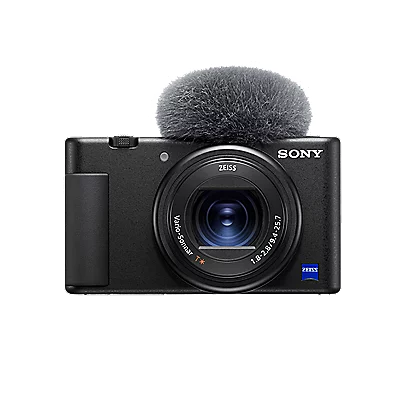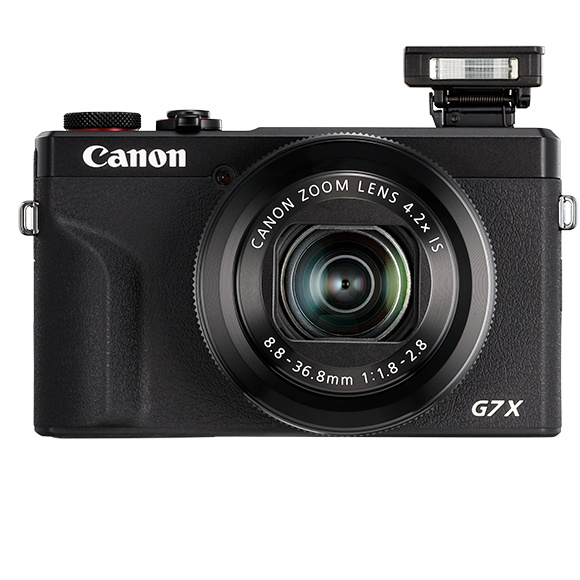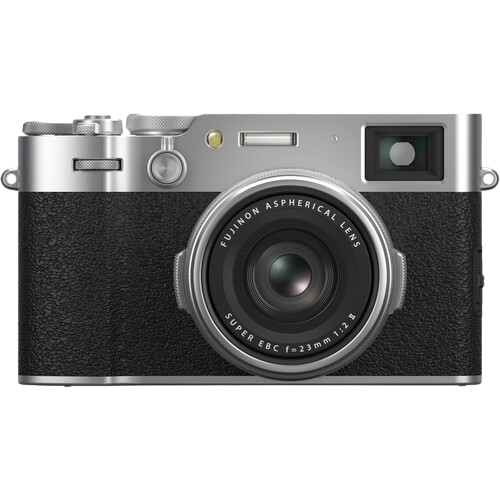If you want a dedicated camera for daily travel or street photography without the weight or complexity of an interchangeable lens model, compact cameras—also referred to as point-and-shoots—are a sensible option. You may concentrate more on pointing and shooting with these cameras since they are usually lightweight, compact, and often portable. They also include built-in lenses. Long zoom lenses and optical image stabilization are only two examples of the functionality and picture quality that many small cameras still provide, even if smartphone cameras are becoming more and more remarkable.
The majority of our selections are more expensive point-and-shoots. The main reason for this is because, unless you purchase an older used model, the more affordable new alternatives are becoming scarcer and usually don’t justify the expense compared to just utilizing the smartphone you probably currently possess. However, there are still some excellent alternatives available if you’re an enthusiast looking for a small camera to use for side shooting or if you like the concept of a specialized all-in-one camera.
The top 2025 tiny cameras are listed here, based on our testing and purchase of over 110 cameras. Try the best mirrorless cameras for travel or the best mirrorless cameras in general if you’re looking for something that’s more portable and has an interchangeable lens. These cameras are often lighter and smaller than DSLR models. As an alternative, you may look at our top vlogging cameras if you’re searching for a portable camera to use for your vlogs.
Table of Contents
- No 1 Sony Cyber-shot DSC-RX100 VII
- No 2 Canon PowerShot G7 X Mark III
- No 3 Fujifilm X100V
Top 3 Best Compact Cameras In 2025
No 1 Sony Cyber-shot DSC-RX100 VII

A little improvement over the RX100 VI, the Sony Cyber-shot DSC-RX100 VII point-and-shoot offers improved focusing and video stabilization at a slightly higher price. The RX100 VII weighs 10.7 ounces and measures 2.3 by 4.0 by 1.7 inches (HWD), making it neither the lightest or slimmest compact available. However, its weight is a result of intricate optics and a design that uses more metal than plastic, and it fits comfortably into jacket pockets.
Although it lacks a visible handgrip of any kind, photographers who would want one may purchase grips from third parties or first parties. It’s still important to use caution since the camera isn’t waterproof or durable. Dust and splash protection are provided by Sony’s larger bridge-style RX10 series, but if you want a device with an image sensor larger than your smartphone, there aren’t many really robust solutions. Sealife offers the DC2000, a 1-inch waterproof model, although it lacks a zoom lens and has very basic features.
A freely rotating control ring surrounds the lens; it may be set up for a number of purposes, but I like to use it for EV adjustment. With the rest of the controls on the back, to the right of the tilting LCD, it is accompanied by the standard zoom rocker switch, shutter release, Mode dial, and On/Off button on top.
The RX100 VII weighs 10.7 ounces and measures 2.3 by 4.0 by 1.7 inches (HWD), making it neither the lightest or slimmest compact available. However, its weight is a result of intricate optics and a design that uses more metal than plastic, and it fits comfortably into jacket pockets. Although it lacks a visible handgrip of any kind, photographers who would want one may purchase grips from third parties or first parties.
Pros
- Sharp 8x zoom lens.
- Electronic viewfinder.
- 1-inch sensor design.
- 20fps capture with subject tracking.
- Eye detection for people and pets.
- Tilting touch screen.
- 4K video with external microphone port.
Cons
- Expensive.
- Can’t start video while images are writing to card.
- Limited touch functions.
No 2 Canon PowerShot G7 X Mark III

Sony and Panasonic are two fierce rivals of the PowerShot G7 X Mark III, but with a longer-than-normal lens, excellent handling, and a full range of features for filmmakers, it manages to provide enough to justify its position in a crowded market.
Following in the footsteps of its predecessor, the PowerShot G7 X Mark II, the G7 X Mark III has a new 20.1MP, 1-inch sensor, a more advanced DIGIC 8 processing engine, and a new Raw Burst shooting mode that allows for up to 30 frames per second.
The camera has four physical control knobs around the body, a flip-up LCD screen, and the same lens as previously, which has a 24-100mm range in 35mm terms. Both Wi-Fi and NFC are available, as is the ability to use the camera’s USB-C connector to charge the 265-shot battery.
Ample rubber for comfort and security, a well shaped grip, and a well-built body that fits perfectly in the hand. Face identification works very rapidly and adheres to objects effectively, and the camera starts up quickly. Focusing is also typically pleasant and prompt.
Although it’s unfortunate that there isn’t a hotshoe on the top plate to support the microphones that can now be plugged into the camera’s side, the responsive touchscreen makes it easy to focus on subjects and swipe through photos, and the EOS-style interface gives you excellent control over your picture taking as well.
Pros
- Great handling and build quality
- Effective face detection
- Responsive and clear touchscreen
- Mic port is a very nice touch
- Very effective image stabilization
- Nice colors in images
Cons
- No hotshoe for external mics
- No built-in viewfinder
- Slightly aggressive noise reduction
- AF system a little dated
- Overexposure frequently occurs
No 3 Fujifilm X100V

For vacation photography, the Fujifilm X100VI is an excellent camera. Despite not being the smallest fixed-lens compact camera available, it is nevertheless very portable, and its high-resolution sensor produces superb images with plenty of information and cropping versatility.
Its optical rangefinder is ideal for shooting busy street scenes or anticipating a subject’s movement in or out of the frame, and its lens features a wide maximum aperture to offer you some freedom in low light. When you have to photograph handheld at slower shutter speeds, IBIS comes in helpful.
Finally, shooting from above or at waist level is made simple by its tilting screen. It does not, however, offer the greatest battery life, and users who would rather zoom in on their objects from a greater distance may find that its fixed focal length is a limitation.
The dual optical rangefinder/electronic viewfinder seen in the Fujifilm X100V is also included in the X100VI. One notable feature is the ability to switch between an EVF that lets you examine exposure settings, depth of field, white balance, focus, and film simulation profiles in real time, and an OVF with frame lines and overlays.
When utilizing the OVF, you may also verify whether your picture is in focus by toggling a tiny electronic focus preview panel. The EVF is the subject of the resolution, magnification, and coverage results shown above. In contrast, the OVF has a 95% coverage area and a stated magnification of around 0.52x.
Pros
- Improved lens
- Dust and splash protection
- Tilting LCD
- Hybrid optical-electronic viewfinder
- Dial-driven control
- In-camera film looks and Raw processing
- 11fps bursts
- 4K video
- Retro looks in black or silver
Cons
- Omits optical and in-body stabilization
- Lens filter required for weather protection
- Limited to UHS-I transfer speeds
- Autofocus not always immediate
How To Choose The Best Compact Camera
There are a number of things to take into account when choosing a small camera. All compact cameras offer mobility, as the name implies, but form factor isn’t the only consideration. Every camera on the aforementioned list combines features, handling, adaptability, and picture quality in some way. What and how you choose to shoot will determine which particular elements are most important. You could be better off utilizing the camera on your smartphone if you can’t locate a small that meets all of your needs.
Sensor size is one of the most important factors to consider. Every one of the top-rated little cameras ought to be an improvement over your smartphone. These days, APS-C and Micro Four Thirds cameras, like the Fujifilm X100V, are just as common as 1-inch ones.
Examine your tiny camera’s lens and zoom capabilities more closely if you want to use it for travel. The latter must have at least 10x optical zoom, if not more, to be worth your consideration. A fixed lens could be more suitable for you if you want to use your camera for candid portraits or street photography. Or, if you like taking pictures at night, go for a compact with high ISO capability and outstanding noise management.
Take note of how a camera handles any topic you choose. We talk about this in our reviews. A tiny percentage of compacts have an optical viewfinder, while the majority use an electronic one. While not all displays can tilt, the majority also have touchscreen interfaces, which make switching from a smartphone easier. Consider if manual controls are important to you as well.
Please be aware that we may receive a commission if you buy something after clicking on the links in our stories. This helps to fund our work. Thank you for your support and attention. Feel free to look around further to find out more about how these commissions support our work. Top Great Reviews

